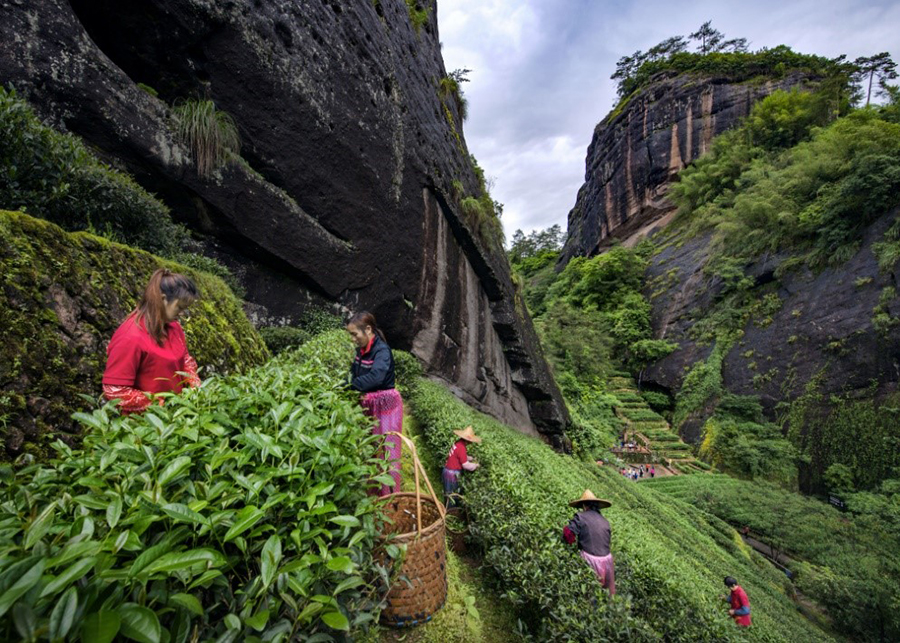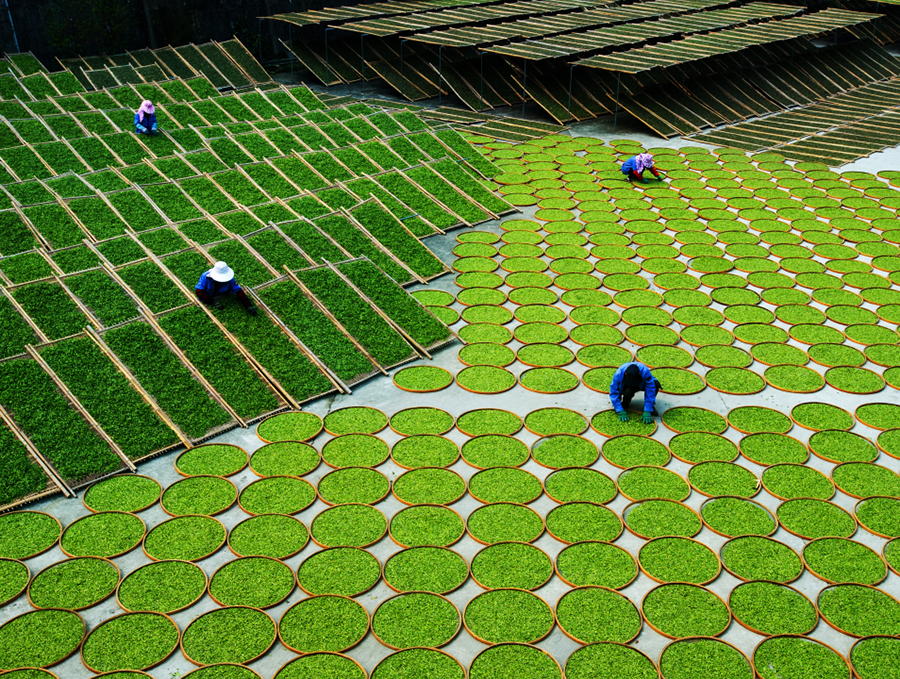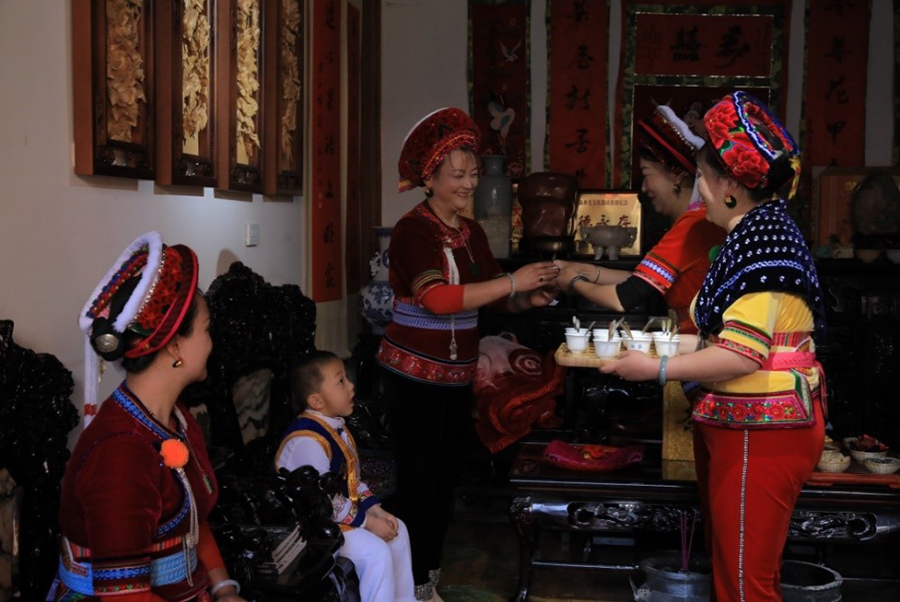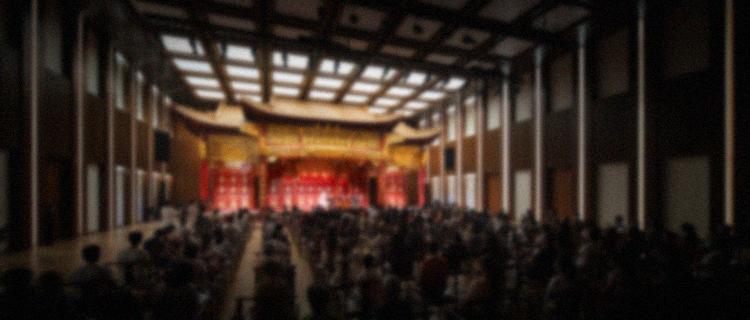UNESCO lists Chinese tea-making
2022-11-29UNESCO approved “Traditional Chinese tea-making techniques and related customs” for inscription on the Representative List of the Intangible Cultural Heritage of Humanity during the 17th session of the Intergovernmental Committee for the Safeguarding of the Intangible Cultural Heritage in Rabat, Morocco, on Nov 29.
With its inclusion, China has a total of 43 items on UNESCO's Intangible Cultural Heritage lists, the highest number of any nation.
Traditional Chinese tea-making techniques and related customs encompass knowledge, skills and practices regarding tea plantation management, picking, manual processing, as well as the consumption and sharing of tea. Chinese people have been cultivating, picking, processing and consuming tea since ancient times.
Tea makers, depending on their local conditions, use core techniques such as killing green to halt oxidation and preserve the tea leaves' natural color, along with fixing, fermentating, withering, shaping and drying, to develop six major categories, namely, green tea, yellow tea, black tea, white tea, oolong tea and dark tea, as well as flower tea and over 2,000 other varieties, for consumption and sharing.
This has given rise to various customs that have been passed down through generations and continue to be an integral part of Chinese daily life, rituals and festive activities.

Farmers pick tea leaves in the tea gardens of Wuyi Mountain, Fujian province.
The traditional tea-making techniques are mainly concentrated in four major tea-producing regions south of the Qinling Mountains and Huaihe River, and east of the Qinghai-Tibet Plateau: Jiangnan (south of the lower reaches of the Yangtze River), Jiangbei (north of the lower reaches of the Yangtze River), Southwest China and South China, and the related customs are widely spread across the country and shared among multiple ethnic groups.
Through routes such as the Silk Road, Tea Horse Road and the Tea Road of Ten Thousand Miles, tea has traversed history and crossed borders to become beloved by people around the world. It has become an important medium for mutual understanding and exchange between China and other civilizations, contributing to the shared heritage of mankind.

Tea artisans conduct the withering process for white tea in Fuding, Fujian province.
The mature and developed traditional tea-making techniques, along with their widespread social practices, reflect the creativity and cultural diversity of the Chinese nation and convey the concept of harmony and inclusiveness between tea and the world.
Through the making, brewing and tasting of tea, the Chinese have cultivated a mindset of peace and inclusivity, formed a reserved and introverted character, and enhanced their spiritual realm and moral cultivation. Tea consumption and sharing serve as important means of communication and connection among people, while tea-related etiquette such as serving tea to guests and respecting elders highlight the humanistic spirit of modesty, harmony, courtesy and respect among the Chinese people.
Driven and promoted by tea culture, China's tea industry has rapidly developed, and the tea science and technology has steadily improved. This comprehensive narrative of tea culture, tea industry and tea science and technology plays a positive role in providing sustainable livelihoods, promoting gender equality, advancing rural vitalization, protecting terrestrial ecosystems, and promoting social, economic and environmental sustainable development.

Local residents participate in "three-course tea" folk custom of the Bai ethnic group at a wedding ceremony.
A total of 44 projects related to traditional Chinese tea-making techniques and related customs have been successively included in China's National List of Representative Intangible Cultural Heritage approved and published by the State Council.
To ensure the sustainability of the projects and enhance inheritance vitality, relevant communities, groups and individuals established a protection working group in December 2020 and jointly formulated the Five-Year Protection Plan for Traditional Chinese Tea-making Techniques and Related Customs (2021-25).
The plan encourages inheritors to pass on their skills in traditional ways, trains specialized talents through vocational schools and higher education institutions, consolidates intergenerational transmission, holds protection and inheritance training courses, strengthens capacity building, establishes research and education bases, compiles popular reading materials, conducts related touring exhibitions, and raises awareness of protection among young people.
Meanwhile, through measures such as strengthening confirmation and management, improving documentation levels, conducting academic research, perfecting protection cooperation mechanisms, maintaining practice venues, and organizing various forms of publicity activities, collaborative protective actions are being implemented.
The Ministry of Culture and Tourism and local governments will support communities, groups and individuals in implementing a series of protective measures to ensure the inheritance and practice of those heritage projects.

 News
News  News
News 

